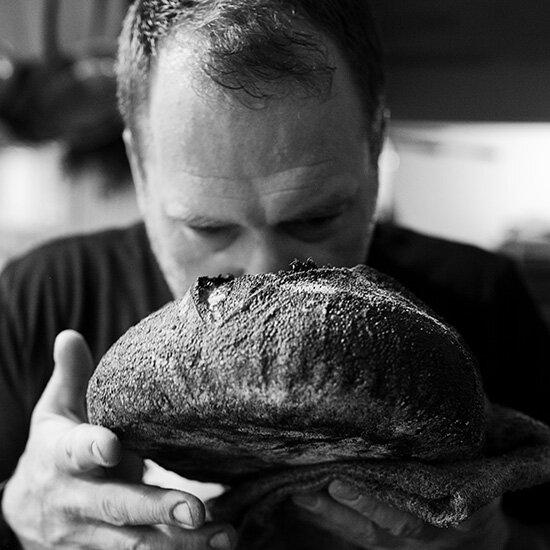Why the Best Chefs Are Burning Wood in Their Kitchens

Matthew Dillon explains why he chose to "put himself at the mercy of the fire," as he says, and fuel his new kitchen solely with wood.—As told to Kate Krader.
At Bar Sajor, we have a big wood-burning oven and a fireplace. We designed the oven—it's about 7-by-5 feet—and we use it for roasting and smoking. The fireplace has a rotisserie and a grill. And that's it. We don't have a traditional range, so we can't just boil water by turning on a gas flame. It's in line with my philosophy of local ingredients: If you have something, you use it; if you don't, you don't. I appreciate the thoughtfulness that comes with those kinds of limitations.
I also like the patience that cooking with live fire requires, and its primitiveness. The whole world has been cooking this way forever. I think it's a subconscious thing, deeply rooted in our souls, in our minds. By choice, we put ourselves at the mercy of the fire.
A couple of things led me to open my own place that's solely powered by wood. One of them was eating at Etxebarri, a restaurant in Spain where everything is cooked over fire and the chef makes his own charcoal and it's über-simple. I had maybe the best meal of my life there. And that kind of experience gets in your head.
Right now, there's a lot of "anti-innovation" in restaurants. Cooks at some of the best and most contemporary high-end restaurants, like Saison in San Francisco and F?viken in Sweden, are looking back to Old World techniques for inspiration. I have that same feeling. I don't want to deconstruct a carrot; I don't want to turn it into a foam. I don't even necessarily want to peel it anymore, or take off the roots. I just make sure there's no dirt on it, and then I roast it until it's blackened and looks completely dead. And then I can taste the life in that vegetable.
F&W Best New Chef 2007 Matthew Dillon fans the flames at Bar Sajor in Seattle. barsajor.com
Related:Summer Grilling Recipes